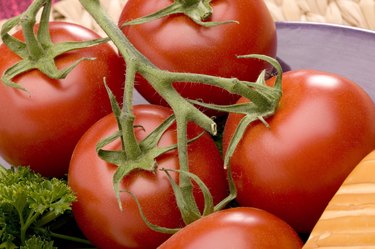
Italy's more than 25 million acres of farmland yield a wide variety of fruits and vegetables, including many that have become synonymous with Italian cuisine. Lush tomato sauces owe their flavor to Italian tomatoes, the olive trees of the southern regions fuel the country's vast olive oil industry and, of course, millions of acres of vineyards give birth to Italy's famous wines. These, however, are only a part of Italy's agricultural landscape.
Wine Grapes
Video of the Day

While Italy cut its vineyard acreage by about 8 percent from 1996 to 2006, the country still boasts more than 2 million acres of vineyards, the third largest in the world behind France and Spain, according to the Wine Institute. Italy's lengthy coastlines and mountainous terrain combine to make wine grape production possible in every Italian region. The country produces dozens of grape varieties, including the Umbrian native Grechetto, the Chianti-producing Sangiovese and the Sicilian Catarratto Bianco.
Video of the Day
Tomatoes
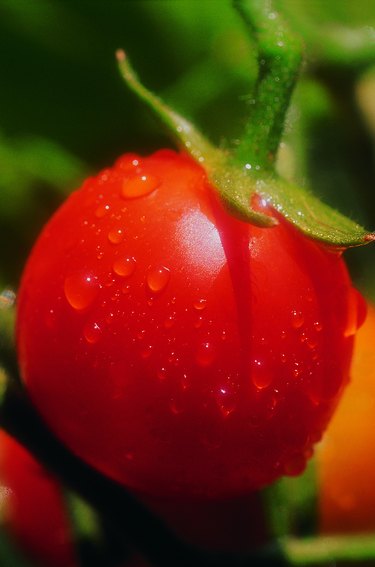
Italy is among the world's leaders in tomato production, behind China, the United States, India, Turkey and Egypt, and is the largest tomato producer in Europe, according to the Food and Agriculture Organization of the United Nations. The country produces about 6 million to 7 million metric tons of tomatoes each year. The primary regions for growing tomatoes include Emilia Romagna and Campagna in the south, Puglia in the north and Sicily.
Sugar Beets

One of Italy's most widely grown vegetables is used not as a direct food product but as a sweetening source: the sugar beet. Italy in 2007 grew 4.7 million metric tons making it the 15th largest producer of the root vegetable worldwide, according to the FAO. Italian sugar beets grow largely in the northern region of the country. Sugar beets contain a high sucrose content and serve as a major source of sugar production worldwide.
Olives
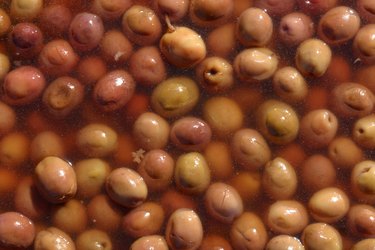
Olive production is one of Italy's oldest industries, dating back to the 7th or 8th Century B.C. Although dwarfed by Spain, Italy is the second largest producer of olives in the world, having grown about 3.4 million metric tons in 2007, according to the FAO. About 80 percent of Italy's olive production occurs in southern regions, primarily in Puglia, Calabria and Sicily. Central regions such as Tuscany, Lazio and Abruzzo also produce olives. The olives fuel Italy's olive oil production, which also is the second largest in the world.
Citrus Fruits
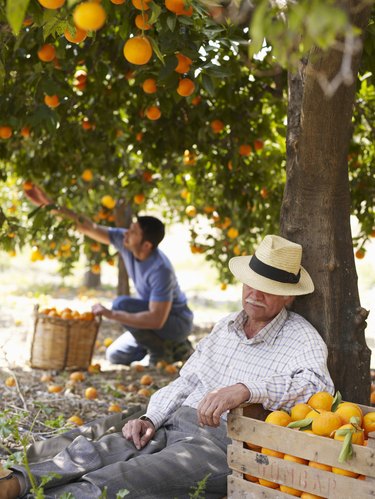
Citrus fruits, particularly oranges, thrive in Italy's Mediterranean climate. Italy is in the top 10 worldwide for orange production, having grown about 2.2 million metric tons of the fruit in 2007, according to the FAO. Sicily in particular is known for its sweet, juicy varieties of blood oranges. Italy also produces tangerines, mandarins and clementines and grew about 600,000 metric tons total of the fruits in 2007.
Other
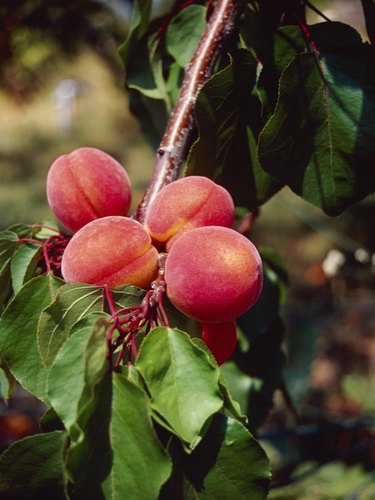
Other fruits and vegetables that Italian farmers grow in significant quantities include peaches, nectarines, apples, lettuce, kiwis, artichokes, pears and potatoes.